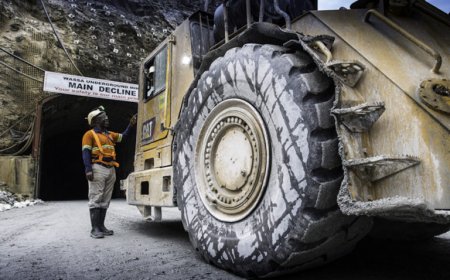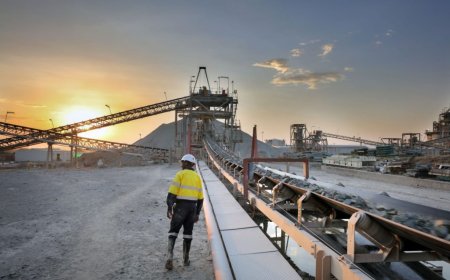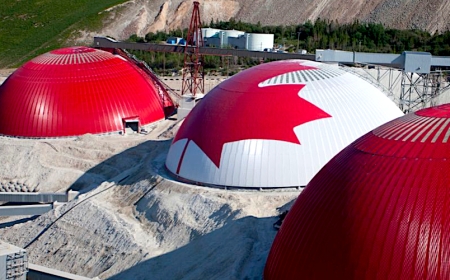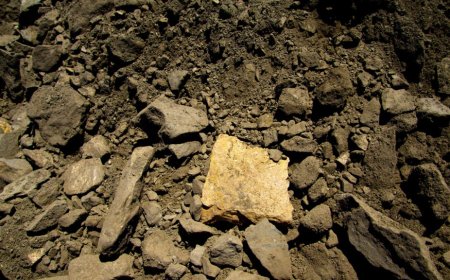Copper Age 2.0: Adopting a comprehensive US copper strategy


The original Copper Age marked a pivotal moment in human history, ushering in an era of technological advancement and societal progress. Copper’s malleability and unique combination of properties enabled the creation of tools, weapons, and other essential items that transformed our ancestors’ lives. Today, we stand at the precipice of a new transformative era: Copper Age 2.0.
Once again, copper is at the forefront of innovation, driving the transition to a clean energy future. From the wind turbines harnessing nature’s power to the electric vehicles revolutionizing transportation, copper is the indispensable backbone of modern technology. Its unique properties, including high conductivity, and durability, make it a critical component in everything from renewable energy and drinking water infrastructure to advanced electronics and data centers.
While the U.S. has abundant reserves and resources, we need an all-of-the-above strategy to secure copper supply.
Meeting the Rising Demand: An All-of-the-Above Approach
The U.S. will need to produce and refine more copper, enhance recycling efforts, and continue importing from reliable trade partners. However, each approach carries risks and limitations, and none can singularly fulfill the demand. All will be needed to secure the future supply.
S&P Global projects that U.S. demand for copper, driven by electrification and the clean energy transition, will double by 2035. This “metal of electrification” is crucial for achieving global net zero carbon emissions by 2050. Copper will be needed for wind, solar, transmission and distribution, electric vehicles, energy storage, data centers, and more. An additional 1.5 million metric tons of copper will be required by 2035 for the energy transition alone. Combined with conventional non-energy demand, total U.S. consumption is projected to be 3.5 million tons by 2035, up from 1.65 million tons in 2023, marking a 112% increase.
Primary Copper Production: Challenges and Opportunities
The U.S. has sufficient reserves and resources of 275 million metric tonnes of copper, more than enough to meet peak clean energy demand through 2035. However, permitting and other hurdles have stalled increased domestic mining and refining. It currently takes an average of 29 years for a new mine to come online. Moreover, not only does the U.S. have the second longest mine development timeline in the world, copper mines in particular are also one of the slowest to develop compared to other critical minerals. Without new production and refining, U.S. net import reliance for refined copper is forecasted to skyrocket to over 60% by 2035.
Even if major projects (New Range, Pebble, Resolution, Twin Metals, and Santa Cruz) come online, their timing may not align with demand needs and might only keep net import reliance at current levels. The U.S. also faces a refining bottleneck, as the number of copper refineries has declined from nine in 2000 to just five in 2023, reducing refined production by 40%. With only two operating primary smelters, additional refining and smelting capacity will be required, or the U.S. will continue exporting domestically mined copper for refining elsewhere. In 2023, the U.S. exported 341,000 metric tons of copper content contained in domestically mined ore and concentrate to other countries.
Increased primary copper production is essential, but on its own it is still not enough – we must also recycle more and continue to import from reliable trade partners.
Recycling Capacity: A Critical Component
Copper is 100% recyclable and can be recycled infinitely without losing its properties. About a third of the total U.S. copper supply comes from pre- and post-consumer recycled content. Recycling rates can improve through increased post-consumer scrap collection and technology upgrades to separate copper from copper-containing products and waste streams and refine it to meet product performance specifications.
Copper is a durable, long-life product — which is one of the reasons why it is critical to so many of the technologies that are driving the clean energy transition and sustainable development more broadly. Due to its unique properties, over 2/3 of the copper ever mined is still in productive use today in buildings and working industrial equipment.
Unfortunately, not enough copper scrap will become available in the next 10 years as much of the copper is still in the use phase and will simply not have reached the end of its useful life in time for the coming surge in demand. The situation is further complicated by the fact that since 1995, domestic scrap has been increasingly exported to China, Canada, and other countries.
New recycling capacity is emerging in the U.S., but most greenfield secondary refining projects are not designed to process complex scrap, such as alloys or contaminated copper scrap. Getting back to 1995 recycling levels would require extensive new U.S. recycling infrastructure targeting lower quality scrap. While this would positively impact supply, it would still not meet projected demand alone.
Even with better collection and processing rates, and the necessity to keep more scrap in the country, recycling alone will not be enough – we must also produce and refine more domestically and continue to import from reliable trade partners.
Trade with Reliable Partners: A Necessary Strategy
Without significant increases in domestic mining, refining and recycling, the U.S. will have to rely on imports from reliable trade partners. In recent years, U.S. import reliance has grown dramatically, from 29.6% in 2016 to 45.7% in 2023. This reliance is expected to reach 60% by 2035 without increased production and recycling.
The U.S. has been able to source nearly all (98%) of its refined copper needs from countries with Free Trade Agreements — Chile, Canada, Peru, and Mexico. These countries have been consistent and dependable suppliers, ensuring a stable flow of copper essential for various industries. However, their production is only forecasted to increase by 6% by 2035, which is insufficient to meet the doubling demand projected in the U.S.
Global geopolitical factors further complicate the situation. Chile, the largest exporter of copper to the U.S., sends only 20% of its total output to the U.S., with the majority (40%) going to China. Similarly, Peru exports more copper to China than to the U.S. This poses a potential risk for U.S. copper imports, as increasing geopolitical tensions could disrupt the trade flows. Furthermore, any global conflict or economic instability could force countries to reallocate their copper exports, leaving the U.S. vulnerable to supply chain disruptions.
Environmental factors also pose significant risks. Around 95% of seaborne refined copper imports into the U.S. pass through the Panama Canal. Recently, transport through the canal has been disrupted by low water levels, reducing the number of vessels from 36 to 22 per day and increasing waiting times to 2.5 days. This bottleneck could severely impact the timely delivery of copper, affecting various industries dependent on its steady supply.
Exploring alternative sources outside current trading partners presents another set of challenges. The vast majority of refined copper is produced in countries without a Free Trade Agreement with the U.S. China alone accounts for over 40% of global production. If the U.S. is unable to source all the copper it needs domestically or through current trade partners, it might have to turn to other countries, where some producers may not adhere to the same environmental and sustainability standards as the U.S. This shift could lead to ethical and environmental concerns, further complicating the supply chain.
Clearly, risks exist with current trade partners and other options for sourcing copper are unacceptable – we therefore must also produce, refine and recycle more domestically.
The Path Forward: A Comprehensive Approach
The need for copper to reach net zero emission goals is both exciting and challenging. Fortunately, the U.S. has the copper reserves, resources and global partnerships to secure its supply for generations. Increasing mining and refining, enhancing recycling, and relying on trade partners are all essential but none alone are sufficient.
The transition to clean energy depends on the seamless coordination of the copper supply chain: mining, smelting, refining, fabrication, manufacturing, waste management, and recycling. Each segment must collaborate closely.
Mining projects must be expedited and smelting and refining capacities expanded. Fabrication and manufacturing must align with supply-side activities, and waste management must support the recycling sector to maximize recovery and keep copper within the domestic supply chain. Communication across all segments is essential to adapt to market and technological changes.
Policymakers can meet this challenge by immediately adding copper to the USGS Critical Minerals list. Numerous countries have already designated copper as critical, recognizing the looming demand requirements. The U.S. Department of Energy has recently added copper to its Critical Materials list. Copper’s inclusion on the USGS Critical Minerals list would open opportunities for investment in production, refining, and recycling, as well as expedited permitting — all necessary for a comprehensive, all-of-the-above strategy.
As we journey through Copper Age 2.0, the parallels to the ancient Copper Age are clear. Copper’s role in driving technological advancement and societal progress is as vital now as it was then. With strategic planning and a multifaceted approach, we can harness this remarkable metal to power a sustainable, low-carbon future.




















